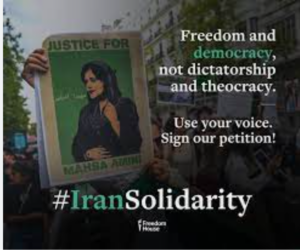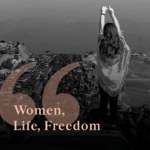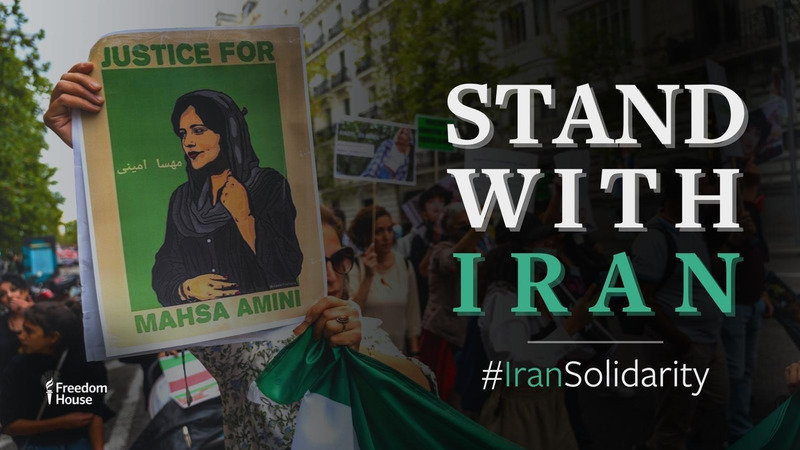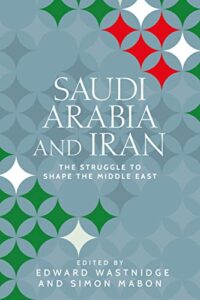Four months into Iran’s uprising, protesters are still in the streets. Authorities are still answering with violence and intimidation, The Washington Post reports:
Nowhere is this bloody stalemate more evident than in the southeastern province of Sistan-Baluchestan, which endured the single deadliest government crackdown on protesters in late September and is now the site of weekly demonstrations after Friday prayers. …The Post analyzed more than 100 videos and photographs, interviewed eyewitnesses and human rights observers, and reviewed data collected by conflict monitoring groups over 17 weeks of protests — to better understand the intensity and sophistication of the government crackdown, and the persistence of the protesters.
 “It’s one of the biggest centers of protests in Iran right now,” said Hadi Ghaemi, executive director of the Center for Human Rights in Iran. At least 29 people have been killed during Friday protests since Oct. 28, according to the Armed Conflict Location & Event Data Project (ACLED), The Post adds.
“It’s one of the biggest centers of protests in Iran right now,” said Hadi Ghaemi, executive director of the Center for Human Rights in Iran. At least 29 people have been killed during Friday protests since Oct. 28, according to the Armed Conflict Location & Event Data Project (ACLED), The Post adds.
The Islamic Republic is now where the Soviet Union was in the early 1980s, says Ali Vaez, Director of the Iran Project at the International Crisis Group and an Adjunct Professor at Georgetown University’s Edmund A. Walsh School of Foreign Service. The system is ideologically bankrupt, at a political dead end, and incapable of addressing its structural economic and societal troubles. It still has the will to fight, as evidenced by its brutal response to the uprisings. But no amount of force will end the standoff with its people, which is primarily the result of the regime’s failures across the board.
The people of Iran can be divided into four different groups, he writes for Foreign Affairs:
- At the forefront are the revolutionaries. Mostly in their teens and early 20s, this is a generation that has thrown caution to the wind and its headscarves to the flames. Even though they appear to be a minority, they seem unwilling to yield. They are not as risk-averse as my generation, whose parents remembered the revolution and knew radical change often ends in grief. In fact, they seem determined to be cleansed of their fathers’ and grandfathers’ failure to confront the regime, which deprived them of their future…
 In the second group are the people who empathize with the young revolutionaries but have yet to fully mobilize. …This group has created a mathematical dilemma for the movement. If the protests do not reach a critical mass and develop a positive vision for the future, the silent majority is unlikely to join. Reaching that threshold, however, will not be possible unless they join. In the near future, another trigger could alter the calculus, bringing this generation out to the streets. But that point has not yet been reached.
In the second group are the people who empathize with the young revolutionaries but have yet to fully mobilize. …This group has created a mathematical dilemma for the movement. If the protests do not reach a critical mass and develop a positive vision for the future, the silent majority is unlikely to join. Reaching that threshold, however, will not be possible unless they join. In the near future, another trigger could alter the calculus, bringing this generation out to the streets. But that point has not yet been reached.- In the third group are the regime’s constituents, who have either ideological or financial vested interest in the status quo. Although these true believers and beneficiaries have shrunk to an absolute minority, unlike the monarchists who were unwilling to come to the streets to fight the Islamist Jacobins in 1978 and 1979, these elites are willing to resort to violence to defend their way of life and the system that embodies it, increasing the risk of infighting among different strata of society.
- Finally, there are the diaspora Iranians. They have come together in ways not seen in the past four decades to support compatriots inside their tormented homeland. They have shed a bright light on horrors committed against the Iranian people and have garnered international backing for the protesters’ cause.
The uncomfortable truth is that the Iranian people’s cause for their emancipation stands or falls on its own. Foreigners are mostly bystanders, Vaez asserts. That is not to say there is nothing the United States can do to help, and the Biden administration has taken important actions. But predicting what comes next is a fool’s errand.
The continuing protests represent the most serious challenge to the regime’s legitimacy yet, notes Ben Dubow, the founder of Omelas. Legitimacy, in its most basic form, is an idea, and a regime’s continued existence relies on its ability to replicate that idea in its population.
If that is now failing, the Ayatollah cannot simply blame an American-Saudi-Israeli-ISIS conspiracy; it has ultimately been his own choice to ignore this basic principle, he writes for CEPA.
 The triumph of freedom in Iran could renew the global tide of democratization that was so strong in the latter twentieth century but has ebbed in the face of authoritarian counterattack, says Freedom House.
The triumph of freedom in Iran could renew the global tide of democratization that was so strong in the latter twentieth century but has ebbed in the face of authoritarian counterattack, says Freedom House.
Victory for Iran’s pro-democracy protesters “would mean deliverance from a regime that denies free elections, free speech, due process of law, and personal autonomy in matters as simple as the choice of clothing,” it adds, issuing a call for global solidarity with the Iranian struggle for freedom.
“This pledge of support for the people of Iran and their fight to live freely shows the remarkable unity of a broad coalition from around the world, across the political spectrum, and from all segments of society,” said Michael J. Abramowitz, president of Freedom House. “The world stands with the Iranian people as they continue to risk their lives and well-being for their freedom.”
The joint statement released by Freedom House, along with co-sponsors including the National Endowment for Democracy (NED): the Center on Democracy, Development and the Rule of Law at Stanford University; Forum 2000; PEN America; Raoul Wallenberg Center for Human Rights; Women’s Learning Partnership; the World Liberty Congress; and World Movement for Democracy says that protesters have shown “breathtaking courage” at great personal risk, and that they “want theocracy and dictatorship replaced by freedom and democracy.”
The petition signatories also include several Nobel Prize Laureates, including Svetlana Alexievich, journalist and author; H.E. Oscar Arias, former President of Costa Rica; Dr. Shirin Ebadi, Iran, human rights defender; Leymah R. Gbowee, Liberia, Nobel Women’s Initiative; Tawakkol Karman, Yemen, human rights activist; Mario Vargas Llosa, Peru, novelist, journalist & former politician; the Center for Civil Liberties, Ukraine; and Maria Ressa, Philippines, CEO of Rappler. Damon Wilson, President and CEO of the National Endowment for Democracy (NED), former and current NED board members, and many NED grantees and partners, including Roya and Ladan Boroumand of the Boroumand Center for Human Rights in Iran, also signed the petition.
 The Foreign Policy Centre and the SEPAD project host a discussion on ‘Saudi Arabia and Iran: Identities and Geopolitics in the Middle East’, on Tuesday 7th February 17:30 – 19:00 GMT.
The Foreign Policy Centre and the SEPAD project host a discussion on ‘Saudi Arabia and Iran: Identities and Geopolitics in the Middle East’, on Tuesday 7th February 17:30 – 19:00 GMT.
This event will discuss the issues raised in a new book, edited by Professor Mabon and Dr Wastnidge, entitled: Saudi Arabia and Iran: Identities and Geopolitics in the Middle East. The book looks at how their rivalry reflects a desire to ensure regime security and legitimacy, whilst also increasing influence across the Middle East.
Speakers:
- Bambos Charalambous MP (Shadow Foreign Office Minister for Middle East & North Africa)
- Professor Simon Mabon (Director of the SEPAD Project and Professor of International Relations, Lancaster University)
- Dr Edward Wastnidge (Deputy Director of the SEPAD Project and Senior Lecturer in Politics and International Studies, The Open University)
RSVP to events@fpc.org.uk.
The petition signatories include several @NobelPrize Laureates, including #Ukraine‘s @ccl_ua & @rapplerdotcom‘s @mariaressa, plus @NEDemocracy President & CEO @DamonMacWilson, @MoveDemocracy & NED grantees, incl @IranRights_org. https://t.co/m9LkJhNZSL
— Democracy Digest (@demdigest) February 2, 2023







